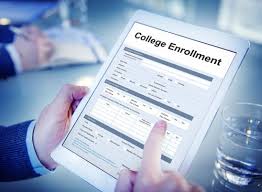Virtual reality technology has been around for years, but it has recently seen a rise in popularity. Many schools are now starting to use virtual reality education to help students with different needs. Some of the main reasons why schools need virtual reality education include:

Encourages innovation and exploration
The learner is given control over their education using virtual reality. In the parallel “world,” they are free to choose and alter their course. Students’ interest in how things function inspires them to experiment with their creativity.
These all contribute to critical thinking and better recall. Learning is raised to a new level by the complete experience.
Therefore, if you’re unsure about the potential of virtual reality in the classroom, just look at how virtual reality benefits students here.
Re-invigorate learning
How often have we overheard students say, “I’m bored.” Teachers put in a lot of effort to keep students interested through interactive activities, group projects, public speaking, and a variety of other methods. Frequently, their efforts are unsuccessful.
It would be an understatement to claim that virtual reality would make learning enjoyable once more. It would also enable teachers to make their lessons more engaging. Students would engage in practical, real-world experiences that will better prepare them for the future.
Memorable Events
Imagine taking a kid to the Great Wall of China, the Titanic’s submerged wreck, or the historic Pompeii. These activities couldn’t be supported by a school budget, but virtual reality education can! Children would have the chance to enjoy once-in-a-lifetime events.
By introducing pupils to practical skills, virtual reality can also aid in preparing them for the employment of the future. Using this method, a scenario based on a current lecture on subjects like specialized training, vocational careers, or nursing can be “practiced” and experienced.
The future is technological
In recent years, technology has changed the classroom. From being passive to being engaged learners, students have changed. There is no doubt that pupils require effective technology abilities in order to succeed in the twenty-first century.
Rarely do you meet a toddler under the age of four who isn’t adept at using a tablet more quickly than any adult? The advantages of virtual reality are actually true!
Learning Gaps are Bridged by Virtual Reality Education
Most students feel successful because they are adept at navigating virtual reality. It’s a fulfilling experience, which is a good experience. Children will continue to look for new enriching experiences if they have faith in their capacity to learn.
In the virtual reality environment, a pupil can also assume any identity they like. Age, gender, and race are irrelevant. They feel comfortable being themselves and are free to do so. This creates opportunities for learning in novel and unconventional ways.






